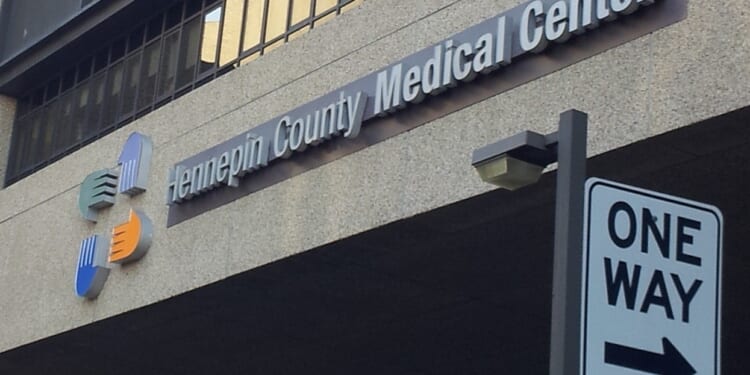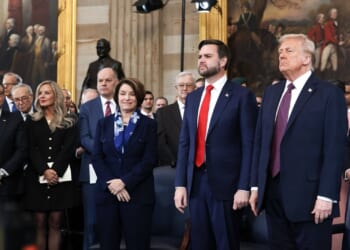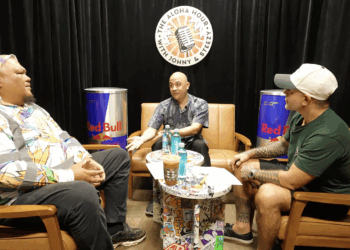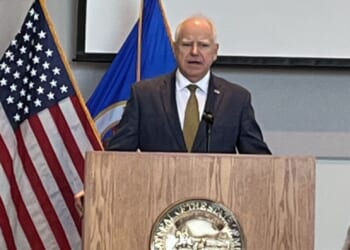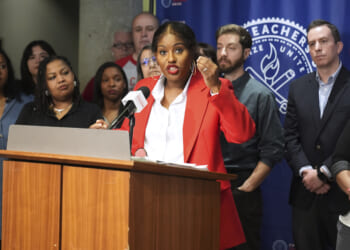When 12-year-old Sophia Forchas stepped out of a stretch limousine and into a hero’s welcome at Hennepin Healthcare (HCMC), she was swept into a bear hug by Dr. Walt Galicich, her neurosurgeon. Two months earlier, Galicich had been guarded about her prognosis. The gunshot wound to her head was so severe that, he admitted, “any ray of hope would take a miracle.”
Last week, HCMC staff, family, celebrated the miracle for which they had prayed. That miracle was delivered through the people who work at HCMC — physicians, nurses, and staff who last year provided care to over 150,000 patients, including many of the state’s most critically injured and ill. Most days, their miracles go unnoticed in the newspaper. Yet HCMC meets a vital need for Minnesota. We must ensure it remains open and excellent. Its financial woes are not new, but the solutions to them should be.
On two August days 18 years apart, HCMC showed why it needs to be understood and funded in new ways.
On Aug. 27 this year, children filled Annunciation Catholic Church for a Mass to kick off the school year. As a gunman blocked the doors to prevent their escape, Amy Forchas — Sophia’s mother and a pediatric ICU nurse at HCMC — was at work, unaware that her hospital would soon mobilize for a disaster involving her own child.
When emergency calls reported a mass shooting in Minneapolis, responders knew the most critically injured had to reach HCMC first. HCMC response teams readied operating rooms, blood supplies, and imaging machines in minutes. Dr. John Hick, medical director for emergency preparedness at Hennepin Health, is responsible for the Level 1 trauma center’s emergency response. When HCMC made the call on August 27th, it was the second mass shooting in as many days.
Neurosurgeon Dr. Walt Galicich awaited the most gravely wounded, including Sophia. Ten of the 24 victims arrived at HCMC, all with severe head or torso injuries. As Sophia was wheeled into the OR, Galicich first noticed her blue fingernail polish and curly hair — then the gunshot wound to her head. At that moment, last week’s celebration seemed impossible.
Galicich and Hick had been on duty together 18 years earlier, on Aug. 1, 2007. At 6:05 p.m., when the I-35W bridge collapsed. In an instant, the 158 people who were on the bridge found themselves trapped in twisted metal, concrete, and river water.
Hick, then an HCMC emergency physician, raced to the scene in his personal car, arriving within 10 minutes, sideswiping another vehicle on the way. He found chaos: fires, a trapped school bus, people wandering amid scattered vehicles. Hick, who worked his way through Mayo Medical School as a part time EMT, triaged patients and set up an on-site command center. The most severely injured victims were transported to HCMC and other hospitals by ambulance, while those with minor injuries found their way with the help of volunteers by boat, car, or on foot. Hick was later credited with limiting fatalities by rapidly evaluating, stabilizing, and evacuating the injured.
Over the following days, Galicich and the team of surgeons operated on dozens of patients with crushing injuries sustained from the 60-foot fall, many with spinal injuries.
There is no playbook for how to deal with 158 people on a bridge in cars falling seven stories into a river. There is nothing to prepare an ER staff to receive a procession of ambulances filled with little kids gunned down in church by a malevolent psycho. But that is what we ask the people at HCMC to do.
We ask HCMC to be a Level I Trauma Center and teaching hospital. But we also ask it to be a food shelf, hotel, mental health recovery center, detox, detention center and much more. Those tasked with its turnaround have for twenty years been good-hearted people who see the hospital as the hub of a wheel of integrated social services, and that is a big part of the problem.
HCMC needs to refine focus on its areas of excellence which are to serve as a teaching hospital and the pre-eminent Level I Trauma Center in the region. HCMC means something. Keep that name. Physicians like Hick and Galicich represent a tradition of excellence in teaching and practice that goes back decades at HCMC. That means something.
In both the Annunciation attack and the 35W bridge collapse, every single victim who made it to the hospital survived. Had the doors been closed, or Hick and Galicich not reenlisted year after year to serve on the front lines of care in Minnesota, things would be different. Large urban trauma and teaching centers in Minnesota need flexibility and a new way to get paid. Finding it will require creativity and new thinking from people outside the traditional social service lobbying class.

